Leather Lined Vise Jaws
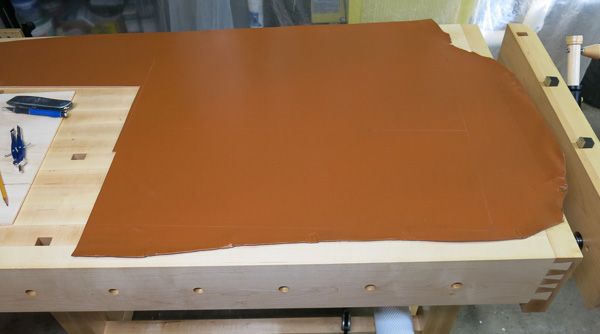
2'x4' Tanned Sole Bend
I recently posted a question to Shop Talk Live #74 about the pros/cons of lining vise jaws with leather. Mike Pekovich made two important points. Don’t line the rear jaw of the front vise, because you may want to use the entire front apron for a supporting surface. And, instead of lining the jaws, optionally use a loose piece of suede to cushion a piece of wood between the jaws. I did some further research on what type of leather woodworkers have used. From all this information, I decided to make jaw pads using thick, firm leather, and make the pads easily removable.
Type of Leather: I used “vegetable tanned sole bends” that were 8-9 ounces (5/32 inches) thick. I found this available at BRETTUNS VILLAGE in Maine (http://www.BrettunsVillage.Com). The leather is thick and firm. The surface is smooth, but grips wood extremely well in the vise. The large pads I cut stand up straight in the vise jaws, and do not flop over. The hides come about 2’x4′ in size, which was plenty to cover my two vises and have left-overs for bench dogs and other accessories. The leather is easily cut with a razor blade. I used a combination of a utility knife, and x-acto knife and a single edge razor blade.
Design: I designed the pads to cover the entire jaw faces, including under the screws and guide rods. This required cutting holes for the rods and screws to go through, and cutting a slit from the bottom of each hole to the bottom of the pad. This allows the pad to be slid over the rods and screws, and closed up again under them.
Implementation: I first made templates out of mat board to get the holes placement correct. Then I transferred the pattern to the leather. I cut the leather about 1/16″ larger on all sides. Since the leather is so stiff, it needs little encouragement to stay in place. I used Scotch Adhesive Transfer Tape, because I had some, but any double-sided tape should work. For both front jaws, I ran the tape (about ¼” wide) around the outer edge of the pad and pressed the pad into place on each jaw.
For the rear jaw of the Veritas Twin Screw Vise, I precisely cut the holes in the leather to squeeze over the two pins which are used to hold the wood above the screws. This actually held the leather in place tightly without requiring adhesive. However, I still used a little tape to secure it to the rear jaw, because I do not anticipate removing this pad.
Next, for the rear jaw of the front vise, I simply placed the pad over the screw and guide rods. It stays in place for the most part, and can easily be removed when necessary. I will have to use it for a while to see if I prefer to tape it or leave it loose.
Lastly, with a piece of wood spanning the jaws edge (one edge at a time) I closed the jaws tightly and trimmed the leather on all four sides to be flush with the wood jaw edges. Simply use a single edge razor to slice along the edge of the jaw toward the sacrificial piece of wood.
The advantage of the transfer tape or double sided tape is that it can be easily cleaned off the vise jaws if you decide not to use the leather, or you need to replace the leather or jaw in the future.
The results are great. The clamping power is amazing and there is no slippage of the wood or leather.
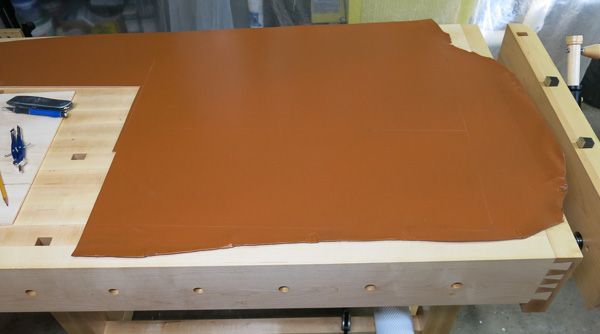
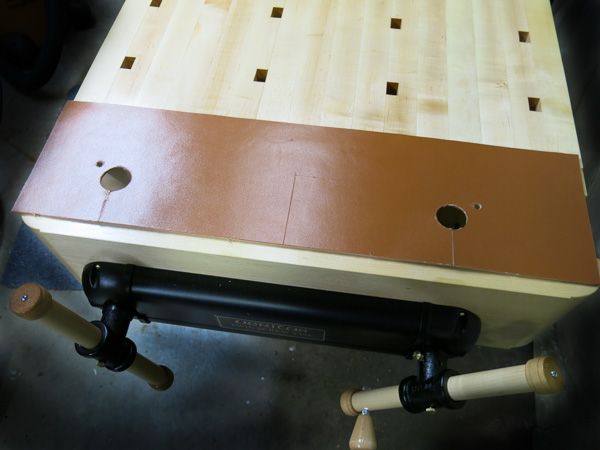
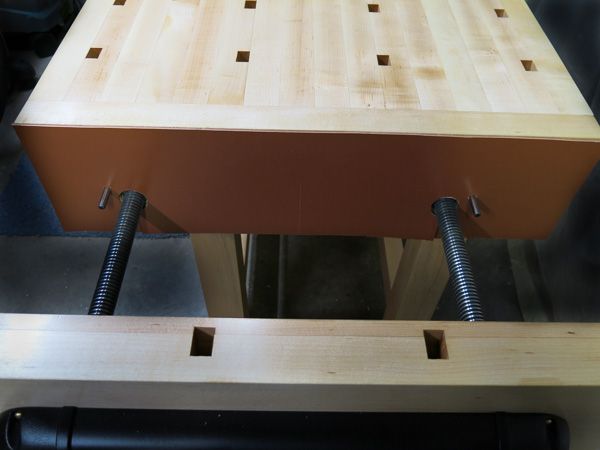
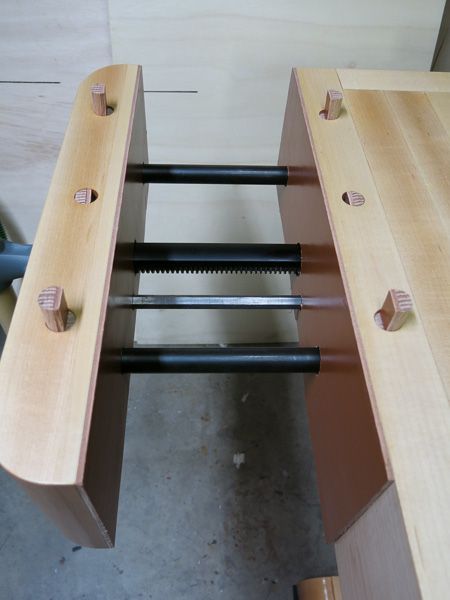
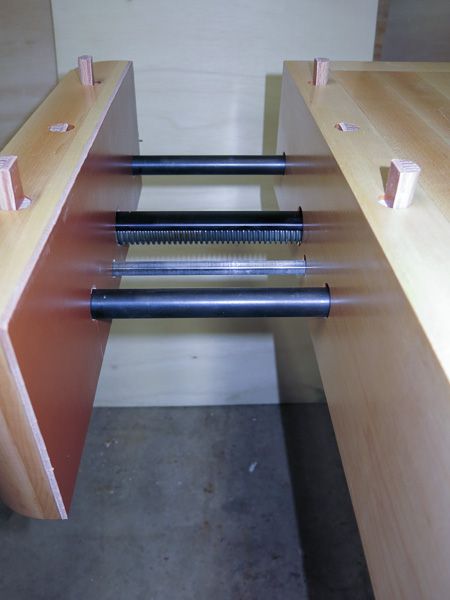


















Log in or create an account to post a comment.
Sign up Log in